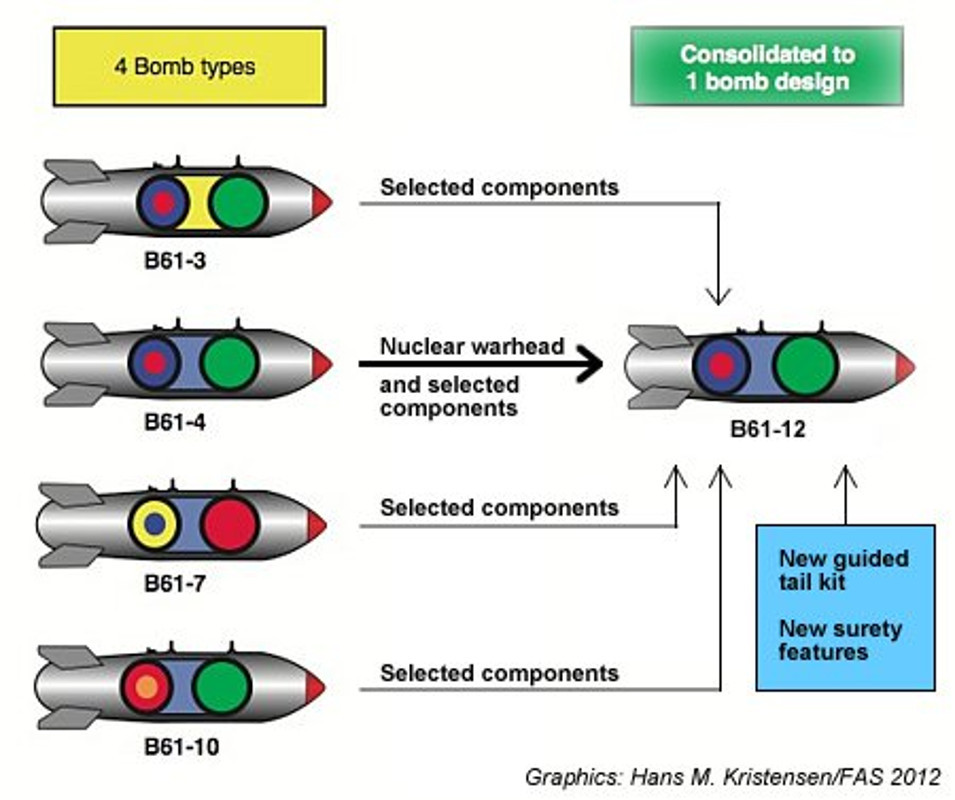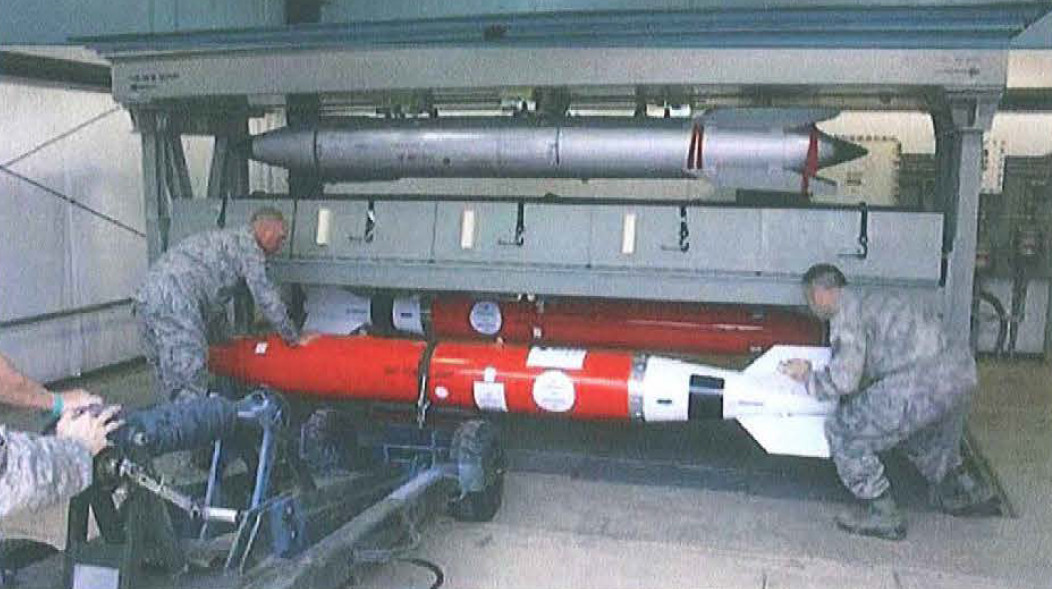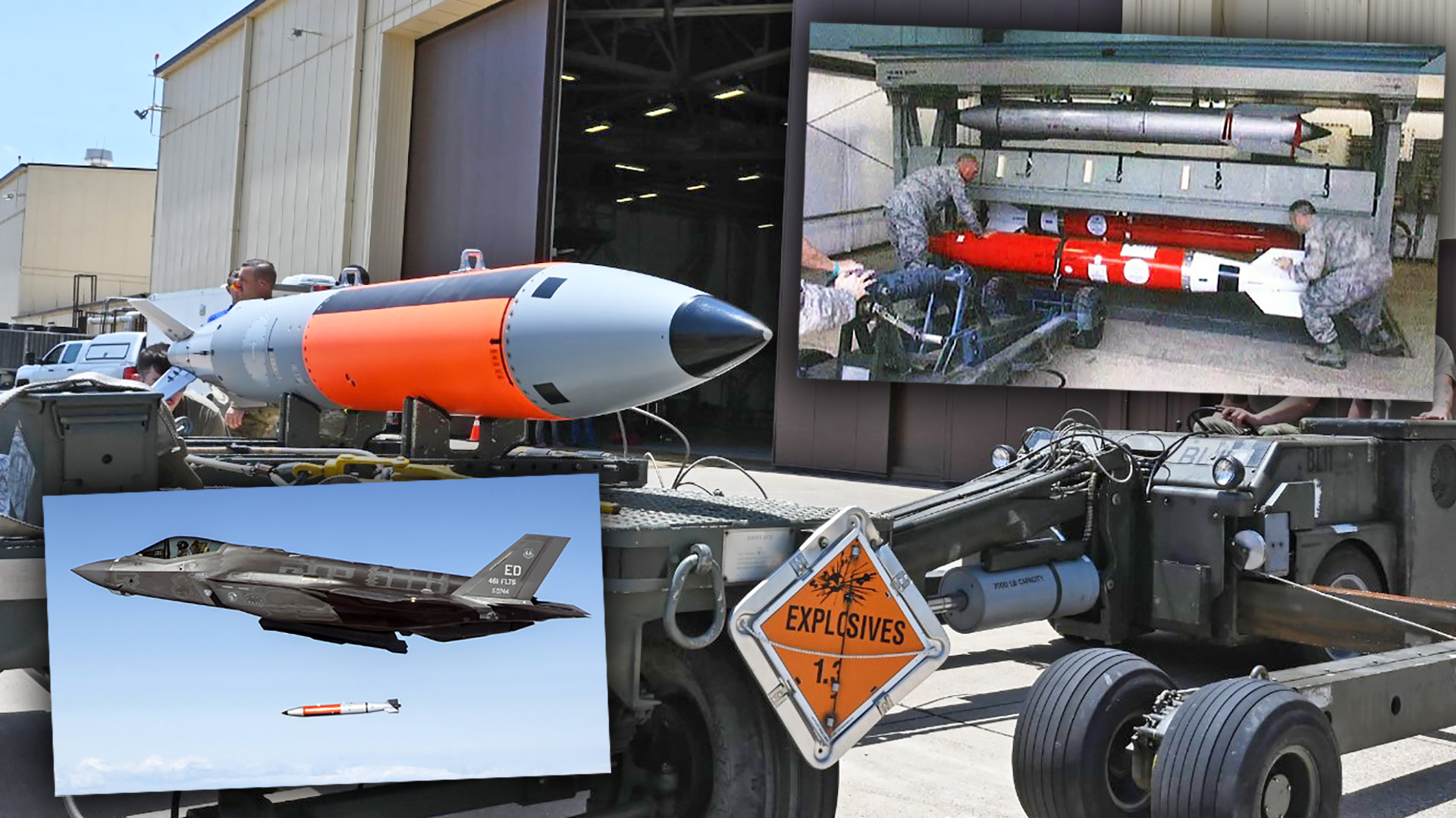The U.S. Air Force has confirmed that there are currently no plans for U.S. Air Force or NATO F-16 Viper fighters or Germany’s Panavia Tornado swing combat jets to be able to employ the forthcoming B61-12 nuclear bomb in its signature guided mode. At present, there are only requirements for the Air Force’s F-15E Strike Eagle combat jets and B-2A Spirit stealth bombers, as well as the service’s future B-21A Raider stealth bombers and certain American and NATO F-35 Joint Strike Fighters, to be able to make use of the weapon’s precision guidance tail kit.
Information about these restrictions and other details regarding the B61-12 were contained in a redacted copy of a 2019 Department of Defense Inspector General (DODIG) audit of work on the tail kit specifically that The War Zone recently obtained via the Freedom of Information Act (FOIA). The Air Force Nuclear Weapons Center (AFNWC) subsequently confirmed that the information in the report regarding which aircraft are expected to employ the B61-12 in the guided mode remains current.

“The B61-12 program threshold requirement for guided mode is on F-15E and B-2 aircraft,” an AFNWC spokesperson told The War Zone. “The B61-12 program objective requirement for Dual-Capable Aircraft in guided mode is the F-35.”
In this context, the term “Dual-Capable Aircraft,” or DCA, refers to non-strategic platforms, such as the F-15E, F-35, F-16, and Torando, and does not include the B-2A or the forthcoming B-21A.

“When mated to the F-16, the B61-12 will operate in its unguided mode,” the AFNWC spokesperson added in their statement.
The Air Force has been responsible for managing the development and acquisition of the B61-12’s inertial navigation system (INS) guidance package, while the Department of Energy’s National Nuclear Security Administration (NNSA) is the lead entity for the rest of the bomb. The 12-foot-long, 825-pound B61-12, each one of which is set to literally cost more than its weight in gold, is a combination of new parts, like the tail kit, and refurbished components from earlier B61-3, -4, -7, and -10 variants. You can read more about the entire B61 family here.

B61-12s are set to replace all of the remaining examples of those previous versions in the U.S. stockpile, including roughly 150 presently spread across six bases in Europe. This includes bombs prepositioned at facilities in Belgium, Germany, Italy, and the Netherlands, which the U.S. military could make available to the air forces of those countries during a major crisis as part of a NATO nuclear sharing agreement. B61s at Incirlik Air Base in Turkey, another NATO member state, are intended for American use only. As an aside, the DODIG report notes that the B61-12 meets the requirement to fit inside and otherwise be compatible with existing secure “vaults” at these bases, as demonstrated in the picture below.

So, the inability of certain aircraft, especially F-16s and Tornados belonging to the Belgian, German, Italian, and Dutch air forces, to make use of the B61-12 in its guided mode is notable. It was previously disclosed that older NATO F-16s, as well as Germany’s Tornados, did not have the appropriate mission systems to make use of the bomb’s guidance system in their existing configuration, but it was not entirely clear whether or not there was an expectation that those DCA jets would be upgraded as part of the integration process.
The tail kit is an absolutely central feature of the B61-12 bomb, with the 2019 DODIG report stressing that “the addition of the tail kit assembly increases the bomb’s accuracy, allowing for a reduction In its nuclear explosive power.” At the same time, it is important to note that accuracy is relative when discussing nuclear weapons, even ones with lower yields.
The B61-12, along with all of the B61 variants it is set to replace, have so “dial-a-yield” capabilities that allow them to be set to detonate with different degrees of explosive force. The B61-12 is expected to have settings for 0.3, 1.5, 10, or 50 kilotons, according to the Federation of American Scientists think tank. This maximum yield setting is lower than the ones understood to be found on the B61-3, -7, and -10 variants (170, 340, and 80 kilotons, respectively), but is actually higher than the reported top option on the B61-4 (45 kilotons).
Beyond that, the years-long delays in the start of the delivery of the new B61-12s, the first production example of which was completed last year, and the time it will now take for the first bombs to be deemed operational, may ultimately render the guidance restriction issue moot. Italy and the Netherlands already operate F-35s, at least some of which could very well eventually be modified to serve in the DCA role. Belgium announced in 2018 that it would buy 34 F-35s, with the first of its jets scheduled to be delivered next year. While there are still some political formalities to clear, Germany is widely expected to go ahead with its own purchase of these stealthy jets, with deliveries starting before 2030.

Whatever happens in the end, it only seems increasingly likely that U.S. and NATO F-16s, not to mention Germany’s Tornados, will never be in a position to employ the B61-12 to the full extent of its very expensive capabilities.
Contact the author: joe@thedrive.com
